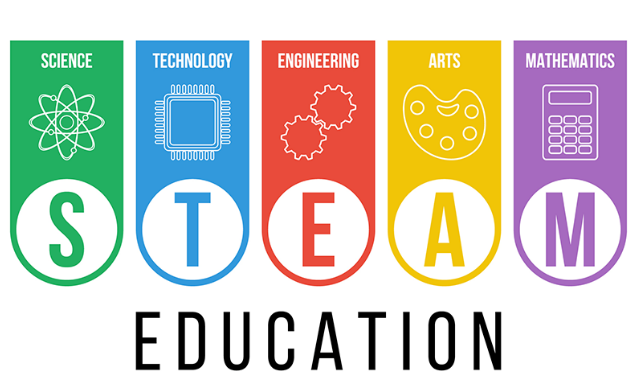
In today’s fast-paced and ever-evolving world, STEM education—Science, Technology, Engineering, and Mathematics—has become more crucial than ever. As we navigate through the 21st century, the demand for skilled professionals in these fields continues to grow exponentially. This article delves into the significance of STEM education and how it prepares individuals for careers in science and technology.
What is STEM Education?
STEM education is an interdisciplinary approach to learning where academic concepts are coupled with real-world lessons. Students apply science, technology, engineering, and mathematics in contexts that make connections between school, community, work, and the global enterprise. This method of learning fosters innovation, critical thinking, and problem-solving skills that are essential in today’s technological landscape.
The Growing Demand for STEM Professionals
The job market for STEM careers is booming. According to the U.S. Bureau of Labor Statistics, STEM occupations are projected to grow significantly faster than non-STEM occupations over the next decade. This growth is driven by the increasing reliance on technology and innovation in various industries. From healthcare to finance, STEM professionals are needed to drive progress and solve complex problems.
Key Statistics
Employment Growth: STEM jobs are expected to grow by 8.8% from 2018 to 2028.
High Salaries: The median annual wage for STEM occupations is significantly higher than the national average.
Job Security: STEM fields offer robust job security due to the constant demand for skilled professionals.
Why STEM Education is Essential
Fosters Critical Thinking and Problem-Solving Skills
STEM education emphasizes the development of critical thinking and problem-solving abilities. These skills are not only crucial for STEM careers but are also valuable in everyday life. Students learn to approach problems methodically, analyze data, and develop innovative solutions.
Encourages Innovation and Creativity
In the STEM fields, creativity is just as important as technical skills. STEM education encourages students to think outside the box and develop novel ideas. This creativity drives technological advancements and contributes to progress in various industries.
Provides Hands-On Experience
STEM programs often involve practical, hands-on learning experiences. This approach helps students understand theoretical concepts by applying them in real-world scenarios. Such experiences are invaluable in preparing students for the workforce.
Prepares Students for High-Demand Careers
As mentioned earlier, the demand for STEM professionals is on the rise. STEM education equips students with the knowledge and skills needed to thrive in high-demand careers. Whether it’s engineering, biotechnology, or data science, STEM graduates are well-prepared to enter and succeed in the job market.
Integrating STEM Education into the Curriculum
To reap the benefits of STEM education, it is essential to integrate it effectively into the school curriculum. Here are some strategies:
Interdisciplinary Approach
Schools should adopt an interdisciplinary approach to STEM education. This involves blending science, technology, engineering, and mathematics into cohesive learning experiences rather than treating them as separate subjects.
Project-Based Learning
Project-based learning is a key component of STEM education. By engaging in projects that solve real-world problems, students can apply their knowledge in meaningful ways. This approach also enhances collaboration and communication skills.
Professional Development for Educators
To effectively teach STEM subjects, educators need ongoing professional development. This ensures that teachers are up-to-date with the latest advancements and methodologies in STEM education, enabling them to provide high-quality instruction.
Access to Resources and Technology
Schools must provide access to modern resources and technology to support STEM education. This includes laboratories, computer equipment, and software tools that are essential for hands-on learning and experimentation.
The Impact of STEM Education on Society
Economic Growth
Investing in STEM education is crucial for economic growth. A workforce skilled in STEM fields drives innovation and productivity, leading to increased economic development. Countries that prioritize STEM education are better positioned to compete in the global market.
Addressing Global Challenges
Many of the world’s pressing challenges, such as climate change, healthcare, and sustainable energy, require solutions rooted in STEM disciplines. By equipping students with STEM knowledge and skills, we empower them to tackle these issues and make a positive impact on society.
Promoting Diversity and Inclusion
STEM education also plays a vital role in promoting diversity and inclusion. Encouraging underrepresented groups to pursue careers in STEM fields helps to ensure a diverse workforce that brings varied perspectives and ideas. This diversity is essential for fostering innovation and addressing the needs of a diverse population.
Conclusion
The importance of STEM education cannot be overstated. It is the foundation upon which the future of science and technology is built. By fostering critical thinking, encouraging innovation, and preparing students for high-demand careers, STEM education is essential for personal and societal growth. As we continue to advance technologically, investing in STEM education will ensure that we are well-equipped to face the challenges and opportunities of the future.

Hi, I am John Smit a Captain in Fire Department City of Newyork with over years of experience in the field of Firefighting and HSE. My passion for fire safety started when I was a young boy and witnessed a neighbor’s house go up in flames along with precious lives. Since then, I had dedicated my life to ensuring the safety of buildings, properties, and individuals in case of a fire and medical emergencies.



